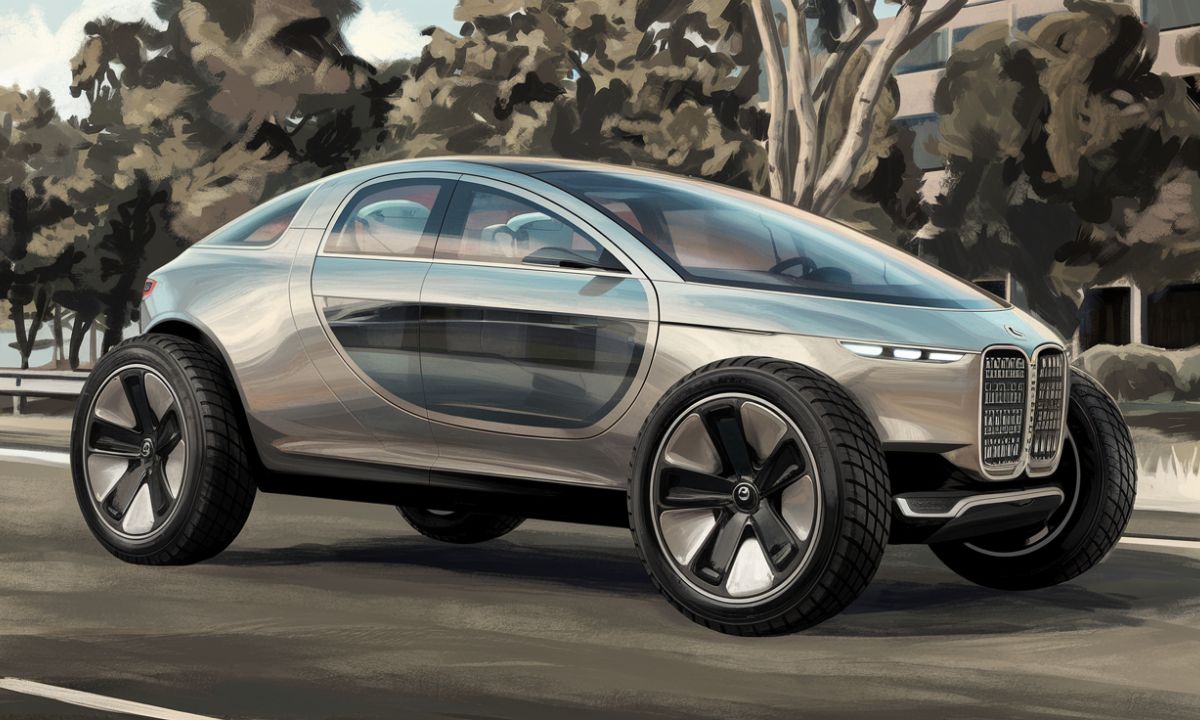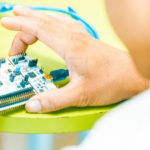Car Plan: drawing:burmhcczepe= vehicle with Style is more than just putting lines on paper; it’s a journey into capturing the character and precision of automobiles. This guide is for those eager to explore automotive art, whether for passion, career, or personal growth.
Here, you’ll find in-depth insights into how to draw cars with flair, from beginner-friendly drawing fundamentals to advanced sketching techniques that make your car illustrations shine.
Why Drawing Cars Captivates Us
Drawing cars isn’t simply an exercise in technical skill; it taps into the thrill of artistic expression. Automotive art merges the complexity of mechanical engineering with the freedom of creative interpretation, resulting in car sketches that can capture a vehicle’s elegance, power, and style. Car enthusiasts, artists, and designers all share a passion for translating a car’s personality onto paper.
From iconic sports cars to futuristic electric vehicles, each sketch brings a different artistic challenge, making vehicle illustration an ever-engaging craft. It’s no wonder that drawing cars has captivated so many—it allows you to explore both technical precision and personal creative expression in every line and shade.
Importance of Learning to Draw Cars
Learning to draw cars provides invaluable benefits that go beyond just art. It enhances hand-eye coordination, understanding of proportions, and the ability to visualize complex shapes—all skills that extend to other art forms and even daily life. Car drawing is also a powerful learning tool for anyone interested in automotive design, from car designers to engineers, as it teaches foundational skills for understanding the structure and car anatomy that define each vehicle.
Key Benefits of Learning Car Drawing
| Benefit | Description |
| Technical Skill Development | Refines accuracy in lines, curves, and proportions, essential for creating realistic drawings |
| Creative Expression | Allows artists to inject personality and flair into technical subjects |
| Visual Perception | Improves spatial awareness and observation skills for better composition and proportions |
| Focus and Patience | Requires concentration and encourages persistence, valuable traits for both art and design |
Drawing fundamentals like these apply across disciplines and enable artists to better understand and appreciate vehicle design from the ground up. This makes car drawing an enriching pursuit, whether as a career foundation or an artistic pastime.
Avoiding Common Drawing Errors
Car drawing, particularly for beginners, can come with a learning curve. Here are some common mistakes and how to avoid them:
- Misaligned Wheels: Maintaining correct alignment in perspective is challenging but crucial. Use guidelines to ensure that wheels are even and spaced proportionally.
- Incorrect Proportions: Many beginners struggle with accurately representing the relationship between different parts of the car. To help with proportion, start with a simplified outline of the car’s major shapes before moving into finer details.
- Over-Complicating Early Stages: Jumping straight into intricate details too early can lead to inconsistencies. Begin with broader shapes, ensuring accuracy in the main form, then build on this foundation with shading and details.
Avoiding these errors sharpens your technical precision and enhances your drawing skills, helping you create realistic, compelling car drawings that bring your vision to life.
Techniques for Better Drawing
Achieving quality in car sketches requires mastery of certain drawing fundamentals and sketching techniques. Here are some recommended steps to improve your car illustrations:
- Begin with Simple Shapes: Sketch out circles for the wheels, rectangles for the body, and basic shapes for windows and doors. This initial sketch serves as a structural guide.
- Apply Perspective Lines: Perspective is vital for realistic car drawing, especially when depicting a car from unique angles. Draw horizon lines and use vanishing points to give your car drawing depth.
- Shading and Texturing: Shading adds realism, while texture brings out finer details like tires or grille patterns. Apply shading techniques like hatching or blending to add depth and bring your car sketches to life.
Each of these drawing practices builds upon one another, leading to better control over your vehicle illustration and making it easier to draw the intricate details that define a car’s appearance.
Tools and Materials for Car Drawing
The quality of your car sketches can be heavily influenced by the tools you use. While any drawing materials can be used to practice, some specific tools can enhance your technical precision and make car drawing more enjoyable. Below are both essential and advanced tools for automotive drawing.
| Tool | Purpose |
| Graphite Pencils | Varied grades (e.g., HB for fine lines, 2B for shading) allow for detail and shading control |
| Sketch Paper | High-quality paper reduces smudging and allows for erasing and reworking |
| Ruler and Compass | Essential for drawing straight lines, wheel circles, and maintaining perspective |
| Digital Tablet | Offers flexibility for digital drawing, layering, and color adjustments |
Experimenting with different media, from charcoal to digital pens, can add an exciting layer to your artistic journey and allow you to express your artistic style in new ways.
Understanding Car Anatomy
Having a solid understanding of car anatomy makes a significant difference in your drawings. Knowing the structure of a vehicle helps you create realistic car sketches with accurate proportions and finer details.
Car Anatomy Essentials
- Chassis: The main structure that holds everything together. Drawing the chassis first can help with proportion.
- Wheels: Essential for balance and perspective. Use circles and ellipses to capture the wheels at different angles.
- Body Panels: These define the car’s profile and shape. Pay attention to the curves, especially on sports cars or sleek modern models.
- Windows and Mirrors: Adding reflective elements and windows helps to bring out the car’s character and make it recognizable.
Understanding the basic vehicle structure forms a foundation for capturing more detailed elements and enables you to add technical precision to your artwork.
Advantages of Sketching Automobiles
Sketching automobiles has several benefits, not just for art enthusiasts but for anyone with an interest in automotive engineering. Here are some reasons why artists find car drawing so fulfilling:
- Sharpens Observation Skills: Car drawing teaches you to observe subtle details, from the curvature of body panels to tire tread.
- Increases Patience and Focus: Working on detailed drawings of complex objects requires a high level of concentration and endurance.
- Develops Design Thinking: Creating car sketches nurtures an understanding of design elements such as proportion, balance, and detail.
Beyond the personal growth aspect, automotive drawing fosters an appreciation for the beauty and complexity of car design, which can be a stepping stone toward careers in vehicle design or automotive illustration.
Enhancing Powers of Observation
One of the most valuable skills developed through car drawing is enhanced observation. As you progress in automotive illustration, you’ll find yourself noticing even the smallest details in car designs, from the angle of headlights to the symmetry of wheels.
Observation Techniques for Automotive Art
- Use Photo References: Study car photos to understand how light and shadow play across the surface.
- Sketch from Different Angles: Drawing cars from various perspectives builds a stronger spatial understanding.
- Compare Details Across Models: Observing the design features of different cars helps in recognizing common structures and unique design choices.
By honing these visualization skills, artists improve their overall drawing ability and become more adept at bringing life to their vehicle illustrations.
Cultivating Patience and Concentration
Creating accurate and detailed automotive art requires a high degree of patience and focus. These traits are vital when working on complex designs, as they help you pay close attention to detail and execute each element with care.
| Patience Benefits | Description |
| Focus on Details | Allows for refining small elements like tire treads, grille patterns, and light reflections |
| Endurance in Long Projects | Enables artists to stay motivated through time-intensive sketches and achieve high-quality results |
| Boosts Artistic Confidence | Patience helps artists remain calm and overcome challenges, leading to greater satisfaction with their work |
These attributes not only improve your ability to draw cars but also contribute to overall personal growth in the artistic journey.
Fostering Creativity and Innovation
One of the best aspects of car drawing is the opportunity it provides for creative exploration. While adhering to basic proportions is essential, there’s ample room for artists to experiment with new forms, exaggerated features, and imaginative styles.
Ways to Foster Creativity in Car Drawing
- Experiment with Unconventional Colors: Use bold or unconventional colors to give your car sketches a unique look.
- Play with Proportions: Experimenting with exaggerated features, like larger wheels or a wider body, can make your drawings stand out.
- Combine Styles: Mixing realistic and cartoonish elements in a drawing can lead to exciting artistic outcomes.
These approaches to artistic exploration encourage artists to step out of traditional boundaries, allowing them to cultivate a unique, artistic style within automotive art.
Sketching Techniques for Beginners
For beginners looking to refine their drawing fundamentals in car drawing, here is a simple step-by-step guide to follow:
- Start with Light Outlines: Using a light pencil, sketch basic shapes for the car’s body and wheels.
- Add Details Gradually: Draw windows, doors, headlights, and other defining features as you go along.
- Use Erasers as Drawing Tools: Erasers aren’t just for mistakes; they can be used to create highlights and add texture.
- Refine the Lines: Once satisfied with the outline, go over it with a darker pencil to define your lines and add shading.
Following this method, beginners can develop a more structured approach to car drawing and gradually improve their skills.
The Role of Feedback in Skill Development
Seeking feedback and improvement is essential in any artistic discipline, including car drawing. Constructive criticism helps you identify areas for growth and refine your skills. Here are some effective ways to utilize feedback in your artistic journey:
How to Seek Feedback
- Join Art Communities: Online platforms like DeviantArt or Instagram can connect you with fellow artists who are willing to share their thoughts on your work.
- Participate in Workshops: Local art classes or workshops offer opportunities for face-to-face feedback from instructors and peers.
- Social Media Sharing: Posting your car sketches on social media can attract feedback from a wider audience. Don’t hesitate to ask specific questions about areas you want to improve.
Benefits of Receiving Feedback
- Diverse Perspectives: Different viewpoints can help you see your work from angles you might have missed.
- Encouragement for Experimentation: Positive feedback can motivate you to try new techniques or styles without fear of failure.
- Skill Refinement: Constructive criticism provides actionable insights that lead to improved technical skills and artistic depth.
By embracing feedback, artists can foster an environment of continuous improvement, leading to more polished and refined car sketches over time.
Advanced Sketching Techniques for Experienced Artists
As you grow in your skills, incorporating advanced sketching techniques can take your automotive art to the next level. Here are some techniques to consider:
1. Layering Techniques
Layering involves building up your drawing gradually, adding different textures and depths. Start with a base layer for the car’s body, then gradually add layers for shadows, highlights, and textures.
2. Dynamic Lighting
Experimenting with different light sources can dramatically change the mood and appearance of your drawings. Practice sketching under varied lighting conditions, such as direct sunlight, night scenes, or overcast days, to understand how light affects shapes and colors.
3. Motion and Action
To convey a sense of speed and movement in your car sketches, use dynamic lines and perspective techniques. Illustrate motion by drawing blurred backgrounds or tilted angles, giving viewers the impression that the car is in action.
4. Mixed Media
Incorporating various materials—such as colored pencils, watercolors, or digital effects—can add richness and depth to your sketches. Each medium offers different textures and effects, allowing you to experiment and discover unique styles.
Implementing these advanced techniques not only enhances your technical precision but also expands your creative horizons in the field of automotive drawing.
Inspiration from Automotive Icons
Finding inspiration in existing automotive designs can significantly elevate your car drawing skills. Studying classic and contemporary vehicles allows you to appreciate diverse design philosophies and styles. Here are some notable automotive icons worth exploring:
Classic Cars
- Ford Mustang: An iconic symbol of American muscle, the Mustang’s sleek design and powerful stance are excellent subjects for capturing dynamic angles.
- Jaguar E-Type: Renowned for its beautiful curves and elegance, the E-Type provides a rich study in automotive artistry.
Modern Innovations
- Tesla Model S: With its futuristic design and electric powertrain, the Model S offers a glimpse into the future of automotive engineering.
- Porsche 911: A perfect blend of form and function, the 911’s timeless silhouette can help artists practice precise curves and sleek lines.
Resources for Inspiration
- Car Magazines: Publications like Car and Driver or MotorTrend showcase the latest automotive trends and designs.
- Auto Shows: Visiting car expos or shows allows you to see vehicles in person, providing a unique perspective for your sketches.
- Online Design Galleries: Websites like Behance or ArtStation showcase portfolios of automotive artists that can ignite your creativity.
Drawing inspiration from these sources can help you refine your style and develop your own unique approach to automotive design.
Car Drawing as a Path to Career Opportunities
For those looking to turn their passion for drawing cars into a career, numerous pathways are available. The skills developed through automotive art can lead to various professions, including:
1. Automotive Designer
As an automotive designer, you’ll work on the aesthetic and functional aspects of vehicles, creating concepts and prototypes that blend style and performance. Strong drawing skills are essential for visualizing designs and communicating ideas effectively.
2. Illustrator for Automotive Publications
Working as an illustrator for car magazines or online publications allows you to combine your artistic skills with a love for automobiles. This role often involves creating images for articles, advertisements, and promotional materials.
3. Concept Artist in Video Games
With the rise of realistic car simulation games, concept artists are in demand to create car models and design environments. Drawing skills are crucial for developing visually compelling and technically accurate car representations.
4. Art Educator
Sharing your knowledge of car drawing and artistic techniques with others can be rewarding. Becoming an art instructor at schools, colleges, or online platforms enables you to inspire future artists and help them develop their skills.
Each of these career paths requires a solid foundation in drawing fundamentals and the ability to convey creative ideas through automotive illustrations.
Future Trends in Automotive Drawing
As technology evolves, so too does the realm of automotive art. Here are some trends shaping the future of car drawing:
Digital Artistry
With the proliferation of digital drawing tools and tablets, many artists are transitioning to digital platforms. This allows for greater flexibility, enabling quick edits and the incorporation of diverse effects.
Augmented Reality (AR) and Virtual Reality (VR)
AR and VR technologies are increasingly influencing how artists visualize and create designs. These technologies offer immersive experiences for exploring automotive designs, enabling artists to interact with their work in real-time.
Sustainability in Design
As the automotive industry shifts towards sustainability, artists will find new opportunities to reflect eco-friendly designs in their artwork. Capturing the essence of electric vehicles or hybrid models can influence public perception and inspire future innovations.
Collaborative Projects
Collaboration between artists and automotive engineers is on the rise, leading to unique projects that merge artistic vision with technical prowess. These partnerships encourage innovation in both fields and create new avenues for creative exploration.
Staying aware of these trends allows artists to remain relevant and adapt their skills to the ever-evolving landscape of automotive art.
Conclusion
Drawing cars is not just about replicating a vehicle’s appearance; it’s a unique blend of artistic expression, technical skills, and personal growth. By embracing the intricacies of automotive design and refining your sketching techniques, you can transform your passion for cars into a fulfilling creative pursuit or even a career. Remember, every artist’s journey is unique—embrace experimentation, seek feedback, and never stop learning. Whether you’re a beginner or an experienced artist, there’s always room for improvement and inspiration in the captivating world of drawing cars.
The Ultimate Guide to iPhone:5e5ylhajjw4= Wallpaper

Taylor Swift is the founder and lead writer behind the independent blog genrealpro.com










